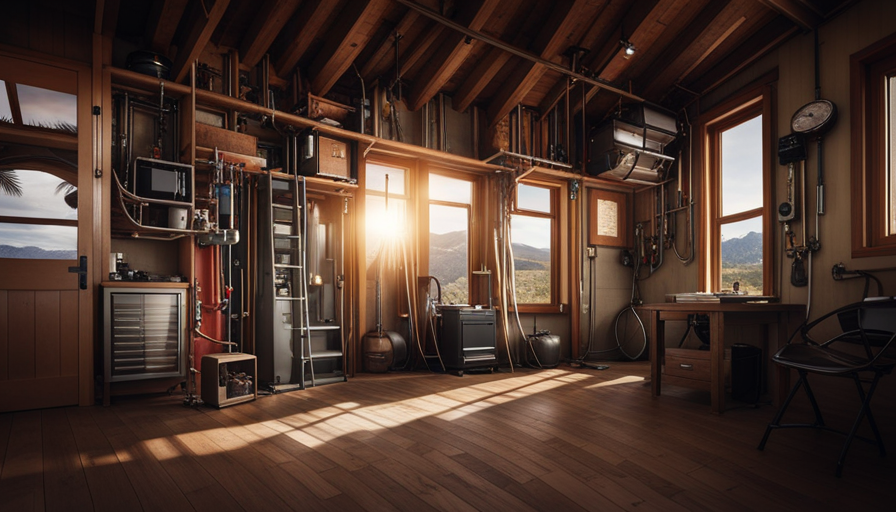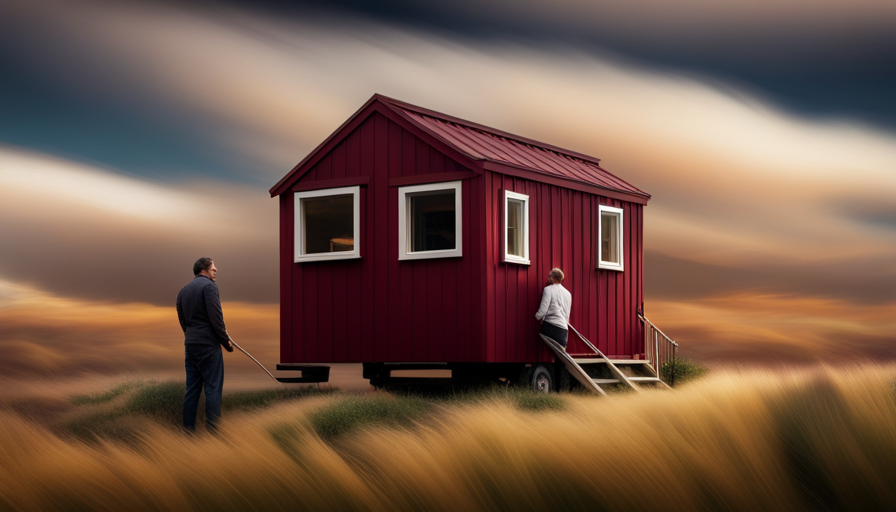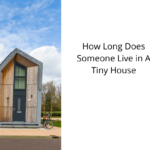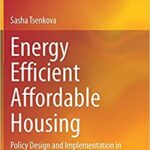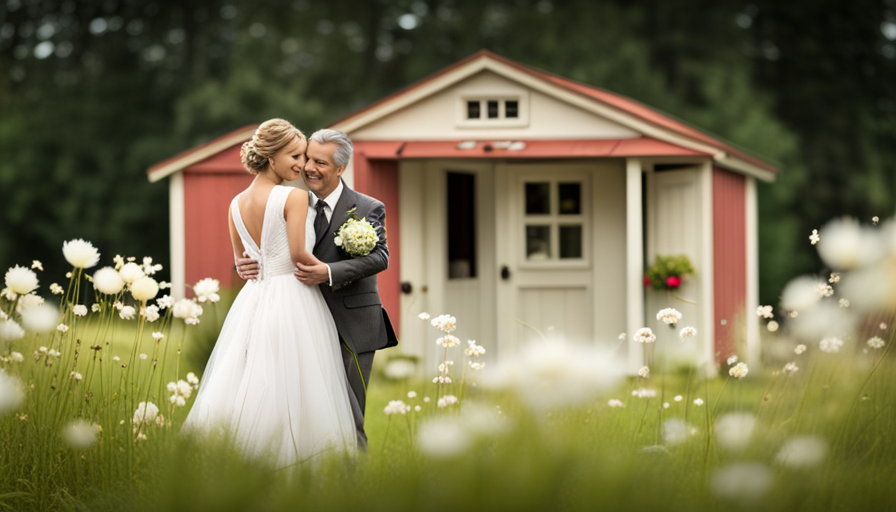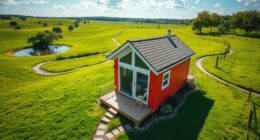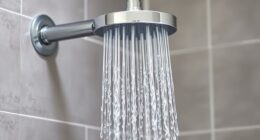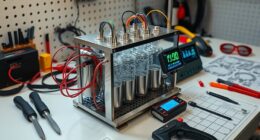Did you know that the average American family spends about 2.5% of their annual income on energy costs? That’s a significant amount of money that could be saved by exploring different housing options, such as **tiny homes**. If you’re interested in saving money and reducing your energy expenses, **tiny homes** might be worth considering!
These compact and efficient dwellings are becoming increasingly popular, offering a sustainable and cost-effective solution for homeowners. But how does plumbing and electrical work in a tiny house?
In this article, I will delve into the intricacies of these systems, providing a technical and informative overview. From understanding the basics of plumbing and electrical setups to addressing unique challenges and ensuring safety, we will explore all aspects of these essential components in tiny house living.
Whether you are considering building your own tiny house or simply curious about how these systems operate, this article will provide valuable insights and resources to help you navigate the world of tiny house plumbing and electrical work.
Key Takeaways
- Plumbing and electrical systems in tiny houses are important for sustainable and cost-effective housing options.
- Space-saving techniques such as tankless water heaters and PEX piping can optimize plumbing design in tiny houses.
- Energy-efficient electrical systems, including LED lighting and solar panels, are essential in tiny houses.
- Sustainable water management and energy-efficient lighting can reduce environmental footprint and lower utility bills in tiny houses.
Understanding the Basics of Plumbing in a Tiny House
Understanding the basics of plumbing in a tiny house is like navigating a maze of pipes and valves. In order to maximize space in a tiny house, space-saving plumbing techniques are crucial. This involves using compact fixtures and strategically routing the plumbing lines to conserve space.
For example, instead of traditional large water heaters, tankless water heaters can be installed to save space and provide hot water on demand. Additionally, using PEX (cross-linked polyethylene) piping instead of traditional copper piping can also save space and reduce the risk of leaks.
Energy-efficient electrical systems are also essential in a tiny house. With limited power sources, it’s important to optimize energy consumption. This can be achieved by using LED lighting, which consumes less energy compared to traditional incandescent bulbs. Additionally, installing solar panels can provide a sustainable and renewable source of electricity. Proper insulation and sealing can also help minimize energy loss and reduce the need for excessive heating or cooling.
Navigating the electrical setup in a tiny house is just as important as understanding the plumbing. By carefully planning the placement of outlets and switches, and properly grounding the electrical system, you can ensure safety and efficiency. It’s crucial to consult with a professional electrician to ensure compliance with electrical codes and standards, as well as to make the most of the available power supply without overloading the system.
Navigating the Electrical Setup in a Tiny House
When it comes to setting up the electrical system in your cozy abode, it’s like untangling a web of invisible threads, ensuring that every corner is illuminated and every gadget is powered up.
In a tiny house, maximizing energy efficiency is crucial. To achieve this, it’s important to integrate smart home technology that can help monitor and control energy usage. This can include smart thermostats, energy-efficient appliances, and automated lighting systems.
To begin, it’s essential to have a reliable power source for your tiny house. This can be achieved through a connection to the grid or by utilizing renewable energy sources such as solar panels or wind turbines. Once you have a power source, the electrical setup involves installing a breaker box, wiring outlets, and connecting the necessary circuits for lights, appliances, and other electrical components.
Integrating smart home technology into your electrical system can further enhance energy efficiency. Smart thermostats, for example, can learn your heating and cooling preferences and adjust accordingly, saving energy and money. Automated lighting systems can be programmed to turn off when no one is in the room, reducing unnecessary energy consumption.
In the subsequent section about maximizing space efficiency in plumbing and electrical design, we will explore how to make the most of the limited space available in a tiny house while still ensuring functionality and comfort.
Maximizing Space Efficiency in Plumbing and Electrical Design
One key aspect of optimizing the limited space in your cozy abode is ensuring that your plumbing and electrical systems are designed to maximize efficiency. In a tiny house, every inch counts, so implementing space-saving techniques is crucial.
When it comes to plumbing, consider using compact fixtures and installing water-saving devices such as low-flow toilets and showerheads. Additionally, utilizing vertical space by installing shelves or cabinets above the toilet or sink can provide storage without sacrificing floor space. Eco-friendly options like composting toilets or greywater systems can further reduce the space needed for plumbing.
In terms of electrical design, it’s important to minimize the use of bulky wires and junction boxes. Consider using slim wire conduits or even embedding the wiring within the walls to save space. LED lighting is a great choice for tiny houses as it is energy-efficient and takes up minimal space. Installing multipurpose outlets that include USB ports can also help reduce the number of plugs needed. Additionally, incorporating smart home technology can further optimize electrical usage and save space.
Addressing unique challenges in tiny house plumbing, such as finding innovative ways to handle waste disposal, requires careful planning and consideration.
Addressing Unique Challenges in Tiny House Plumbing
Tackling the distinctive hurdles of plumbing in a compact living space requires innovative solutions and careful consideration. In a tiny house, every square inch counts, so maximizing water efficiency is crucial. One way to achieve this is by using low-flow fixtures and appliances, such as low-flush toilets and water-saving showerheads.
Additionally, graywater recycling systems can be implemented to reuse water from sinks and showers for irrigation purposes, further reducing water consumption.
Another challenge in tiny house plumbing is the limited space available for pipes and storage tanks. To overcome this, vertical plumbing designs can be employed, where pipes are routed vertically through the walls, saving valuable floor space. Additionally, compact and space-saving water heaters, such as tankless or point-of-use heaters, can be used instead of traditional large tanks.
In terms of alternative power sources, tiny houses can benefit from solar or wind energy systems to power their plumbing needs. Solar panels can generate electricity to run water pumps, heaters, and other plumbing components. Similarly, wind turbines can be installed to harness wind power and generate electricity.
Ensuring safety and compliance in electrical systems is another critical aspect of tiny house living.
Ensuring Safety and Compliance in Electrical Systems
To guarantee the well-being of occupants and meet regulatory standards, it’s imperative to ensure that electrical systems in compact dwellings are safe and compliant. Here is a list of key considerations for safety and compliance in electrical systems for tiny homes:
-
Safety regulations: Tiny homes must adhere to specific safety regulations, such as the National Electrical Code (NEC) and local building codes. These regulations define the minimum standards for electrical installations to prevent hazards and ensure the safety of the occupants.
-
Electrical inspections: It is crucial to have electrical systems in tiny homes inspected by certified professionals. These inspections help identify any potential issues or code violations, ensuring that the electrical system is installed correctly and operates safely.
-
Grounding and bonding: Proper grounding and bonding of electrical systems are essential to protect against electrical shocks and fires. This involves connecting electrical equipment and appliances to a grounding system, ensuring the safe dissipation of electrical currents.
-
Overload protection: Tiny homes have limited electrical capacity, so it’s vital to install appropriate overload protection devices. Circuit breakers and fuses help prevent electrical fires and equipment damage by shutting off the power supply when the electrical load exceeds safe limits.
In the subsequent section, we will explore sustainable plumbing and electrical solutions for tiny homes, focusing on efficient use of resources and eco-friendly technologies.
Sustainable Plumbing and Electrical Solutions for Tiny Homes
Ensure the sustainability and efficiency of your compact dwelling by implementing eco-friendly plumbing and electrical solutions. In a tiny house, where every square inch counts, it’s essential to maximize the use of available resources.
Sustainable water management is crucial for minimizing waste and conserving water. Installing low-flow fixtures, such as faucets and showerheads, can significantly reduce water consumption. Additionally, using a composting toilet or a greywater system can help recycle water for other purposes, such as watering plants or flushing toilets. These measures not only conserve water but also reduce the strain on the environment.
Energy-efficient lighting is another essential aspect of sustainable living in a tiny house. LED lights are the most energy-efficient option available, using up to 75% less energy compared to traditional incandescent bulbs. They also have a longer lifespan, reducing the need for frequent replacements. Incorporating natural lighting through skylights and strategically placed windows can further reduce the reliance on artificial lighting.
By implementing sustainable water management practices and using energy-efficient lighting, you can reduce your environmental footprint and lower your utility bills in a tiny house.
In the next section, we’ll explore how to troubleshoot common plumbing and electrical issues that may arise in your compact living space.
Troubleshooting Common Plumbing and Electrical Issues
When it comes to troubleshooting common plumbing and electrical issues in a tiny home, there are three key points to consider.
First, fixing leaks and pipe blockages is crucial to maintain a properly functioning plumbing system.
Second, resolving electrical short circuits is essential for the safety of both the occupants and the home itself.
Lastly, identifying and fixing wiring problems is necessary to ensure that all electrical components are working efficiently and effectively.
Fixing Leaks and Pipe Blockages
Fixing leaks and pipe blockages can be a frustrating challenge for tiny house owners, but there are simple solutions that can save the day. Here are three key strategies for fixing leaks and maintaining your pipes:
-
Inspect regularly: Conduct routine checks to identify any leaks or blockages before they become major issues. Look for signs of water stains, mold, or dampness, and listen for any unusual sounds coming from your pipes.
-
Fix leaks promptly: If you discover a leak, it’s crucial to address it immediately. Use plumber’s tape or sealant to patch small leaks, and replace damaged pipes if necessary. Ignoring leaks can lead to water damage and costly repairs.
-
Clear blockages safely: When dealing with pipe blockages, avoid using harsh chemicals that can damage your pipes. Instead, try using a plunger or a drain snake to dislodge the blockage. If the issue persists, consult a professional plumber.
By following these methods, you can effectively maintain your plumbing system and minimize the occurrence of leaks and blockages.
Now, let’s delve into resolving electrical short circuits.
Resolving Electrical Short Circuits
Resolving electrical short circuits is like finding the hidden path in a labyrinth, requiring careful navigation and a keen eye for clues. When faced with an electrical overload, it is crucial to act swiftly to prevent electrical fires. To resolve this issue, the first step is to identify the source of the short circuit. This can be done by examining the electrical panel and checking for any tripped circuit breakers or blown fuses. Once the source is located, the next step is to isolate the problem area by turning off the power to that specific circuit. After that, the faulty wiring or damaged electrical component needs to be repaired or replaced. Finally, it is essential to test the circuit to ensure it is functioning properly and to prevent future short circuits. Transitioning into the subsequent section about identifying and fixing wiring problems, it is important to understand the signs of faulty wiring before tackling any electrical issues.
Identifying and Fixing Wiring Problems
To successfully identify and fix wiring problems, you need to have a keen eye for subtle signs and be willing to take on the challenge head-on. Here are some steps to help you fix faulty wiring and troubleshoot electrical problems:
-
Start by turning off the power to the affected circuit to ensure your safety.
-
Inspect the wiring for any visible signs of damage, such as frayed or exposed wires.
-
Use a multimeter to test the continuity of the wires and check for any shorts or open circuits.
-
If you find any issues, such as loose connections or damaged wires, repair or replace them accordingly.
By following these steps, you can effectively address wiring problems and ensure the safety of your tiny house electrical system.
Moving forward, it’s important to consider whether to tackle these issues yourself or seek professional help in plumbing and electrical work.
DIY vs. Professional Help in Plumbing and Electrical Work
When it comes to plumbing and electrical work in a tiny house, it’s important to assess your own skills and knowledge before deciding whether to tackle the project yourself or hire a professional.
Consider the complexity of the task, your previous experience, and your comfort level with potentially dangerous situations. Additionally, cost and time considerations should be taken into account.
While DIY may save you money, it can also be time-consuming and may require additional tools or materials. If you do decide to hire a professional, it’s crucial to hire licensed plumbers and electricians who have the expertise and qualifications to ensure the job is done safely and up to code.
Assessing Your Skills and Knowledge
Evaluating my abilities and understanding, I can determine if I possess the necessary skills and knowledge to tackle plumbing and electrical work in a tiny house. Assessing my skill level is crucial to ensure that I am equipped to handle these tasks effectively and safely.
Fortunately, there are numerous learning resources available to help me gain the required expertise. Online tutorials, DIY books, and workshops can provide valuable information on plumbing and electrical systems. By studying these resources and practicing the necessary techniques, I can enhance my skills in these areas.
However, it’s important to note that plumbing and electrical work require a certain level of expertise due to potential risks and complexities involved. Therefore, it’s essential to weigh the advantages and disadvantages of DIY versus professional help. Considering the cost and time considerations, I can make an informed decision about which approach to take.
Cost and Time Considerations
Consider the cost and time involved before embarking on these tasks, as they can be quite labor-intensive and may require a significant investment. When it comes to plumbing and electrical work in a tiny house, cost considerations and time management are crucial factors to consider. To give you an idea, let’s take a look at a comparison table outlining the average cost and time required for these tasks:
| Task | Average Cost | Time Required |
|---|---|---|
| Plumbing | $2,000 – $5,000 | 1-2 weeks |
| Electrical Wiring | $1,500 – $3,500 | 1-2 weeks |
These estimates can vary depending on the complexity of your tiny house design and the extent of the work required. It’s important to allocate enough time and budget accordingly. In the next section, we will discuss the benefits of hiring licensed plumbers and electricians for these tasks.
Hiring Licensed Plumbers and Electricians
Now that we’ve considered the cost and time implications of plumbing and electrical work in a tiny house, it’s crucial to discuss the importance of hiring licensed plumbers and electricians. While some homeowners may be tempted to tackle these tasks themselves, it’s imperative to prioritize safety and efficiency. Hiring experienced professionals ensures that all plumbing and electrical systems are installed correctly, minimizing the risk of leaks, fires, or other hazards.
Additionally, licensed plumbers and electricians possess the necessary knowledge and expertise to navigate any challenges that may arise during the installation process. To further emphasize the importance of hiring professionals, here are four key benefits:
- Compliance with building codes and regulations.nn2. Access to specialized tools and equipment.nn3. Warranty and insurance coverage.nn4. Peace of mind knowing the work is done right.
By hiring licensed plumbers and electricians, you can rest assured that your tiny house’s plumbing and electrical systems are in capable hands.
Moving forward, let’s explore future innovations in tiny house plumbing and electrical.
Future Innovations in Tiny House Plumbing and Electrical
Imagine living in a tiny house where plumbing and electrical systems are so advanced that they seamlessly integrate into the minimalist design, making your daily tasks effortless and efficient. The future of tiny house plumbing and electrical is all about automation and renewable energy integration. With the advancements in technology, we can expect to see innovative solutions that simplify our lives even further.
One exciting trend in tiny house plumbing is the use of smart sensors and automated controls. These sensors can monitor water usage and detect leaks, allowing for timely repairs and conservation of resources. Imagine a system that automatically adjusts water flow based on your needs, ensuring optimal efficiency without any manual intervention.
In terms of electrical systems, the future holds great promise for renewable energy integration. Solar panels and wind turbines are becoming more affordable and efficient, making it easier to power your tiny house with clean energy. Battery storage systems can store excess energy for use during cloudy or windless days, ensuring a constant power supply.
To evoke emotion and create a visual representation of these future innovations, here is a table showcasing the potential benefits:
| Benefits of Future Innovations | ||||
|---|---|---|---|---|
| Effortless Automation | Resource Conservation | Cost Savings | Environmental Impact | Enhanced User Experience |
As we look ahead to the future of tiny house plumbing and electrical, it is important to stay informed and prepared. In the next section, we will discuss resources and recommendations for plumbing and electrical in tiny houses, ensuring that you have the knowledge and tools to make informed decisions.
Resources and Recommendations for Plumbing and Electrical in Tiny Houses
To ensure a seamless and hassle-free experience in your cozy abode, it’s crucial to have access to reliable resources and expert recommendations on the intricate systems that keep your tiny sanctuary running smoothly. When it comes to plumbing and electrical in tiny houses, it’s important to follow best practices to ensure safety and efficiency.
For plumbing, there are several resources available online that provide helpful guides and tutorials specifically tailored for tiny houses. These resources cover everything from choosing the right plumbing fixtures and fittings to designing an efficient water system. It’s also recommended to consult with a professional plumber who has experience working with tiny houses to ensure that your plumbing system is designed correctly and meets all local codes and regulations.
When it comes to electrical work, it’s essential to have a solid understanding of electrical safety and the specific requirements for tiny houses. Online resources can provide valuable information on topics such as electrical system design, wiring techniques, and choosing the right electrical components for your tiny house. It’s crucial to follow all electrical codes and regulations to ensure the safety of your home.
In addition to online resources, joining tiny house communities and forums can provide valuable insights and recommendations from others who have experience with plumbing and electrical work in tiny houses. Sharing experiences and learning from others can help you make informed decisions and avoid common pitfalls.
By utilizing these resources and following best practices, you can ensure that the plumbing and electrical systems in your tiny house are reliable, efficient, and safe.
Frequently Asked Questions
What are some common plumbing and electrical issues that can arise in a tiny house?
Some common plumbing issues in a tiny house include leaks in pipes, clogged drains, and problems with the water heater.
Electrical issues can range from flickering lights to overloaded circuits.
It’s important to properly maintain and regularly inspect the plumbing system to prevent these issues. Similarly, electrical issues can be avoided by ensuring proper wiring and using appropriate electrical appliances.
Regular maintenance and professional assistance can help address and resolve these common plumbing and electrical issues in a tiny house.
How can I troubleshoot plumbing and electrical problems in my tiny house?
When it comes to troubleshooting plumbing and electrical problems in my tiny house, I always feel like a DIY superstar. I mean, who needs a professional, right?
Well, let me tell you, it’s not all rainbows and unicorns. If you’re up for the challenge, here are some troubleshooting tips.
For plumbing, check for leaks, clogs, and water pressure issues.
And for electrical, start by inspecting the circuit breaker, outlets, and wiring connections.
But remember, sometimes it’s best to call in the experts.
Should I hire a professional or attempt to do the plumbing and electrical work myself?
I strongly recommend hiring a professional for the plumbing and electrical work in a tiny house. DIY projects can be tempting, but when it comes to these critical systems, safety should be the top priority.
Professionals have the necessary expertise and experience to ensure that the work is done correctly and up to code. In addition, they can identify potential hazards and take necessary precautions to mitigate them.
It’s best not to compromise safety when it comes to plumbing and electrical work.
Are there any future innovations or advancements expected in the field of tiny house plumbing and electrical systems?
In the field of tiny house plumbing and electrical systems, there are exciting future innovations and advancements expected. These include more efficient water and energy-saving technologies, such as smart water meters and energy management systems.
Additionally, advancements in compact and space-saving plumbing and electrical components will make it easier to integrate these systems into tiny house designs. These innovations will enhance the functionality and sustainability of tiny house plumbing and electrical systems.
Can you recommend any specific resources or websites for further information on plumbing and electrical in tiny houses?
When it comes to finding the best resources for plumbing and electrical information in tiny houses, I highly recommend checking out Tiny House Community and Tiny House Build. These websites offer a wealth of technical and precise information on how to tackle plumbing and electrical work in tiny houses.
Additionally, if you’re looking for reliable professionals, I suggest reaching out to local tiny house builders or attending tiny house workshops and conferences where you can connect with experienced experts in the field.
Conclusion
In conclusion, plumbing and electrical work in a tiny house requires careful planning and attention to detail. It is essential to understand the basics of these systems and navigate their setup in order to maximize space efficiency.
Safety and compliance should always be prioritized, and when facing issues, troubleshooting is crucial. While some may choose to take on DIY projects, it’s important to consider professional help for complex tasks.
Looking ahead, future innovations in tiny house plumbing and electrical will continue to enhance the functionality and convenience of these systems.
Hi, I’m Emma. I’m the Editor in Chief of Tiny House 43, a blog all about tiny houses. While tree houses are often associated with childhood, they can be the perfect adult retreat. They offer a cozy space to relax and unwind, surrounded by nature. And since they’re typically built on stilts or raised platforms, they offer stunning views that traditional homes simply can’t match. If you’re looking for a unique and romantic getaway, a tree house tiny house might just be the perfect option.
